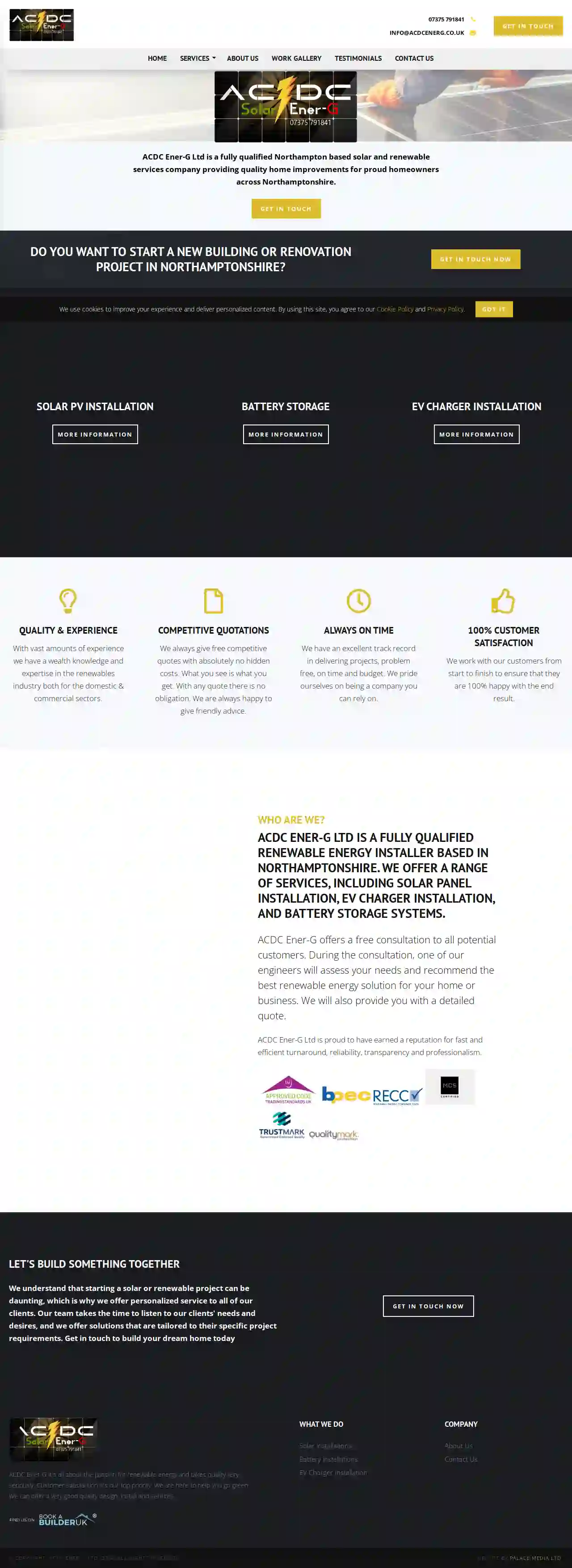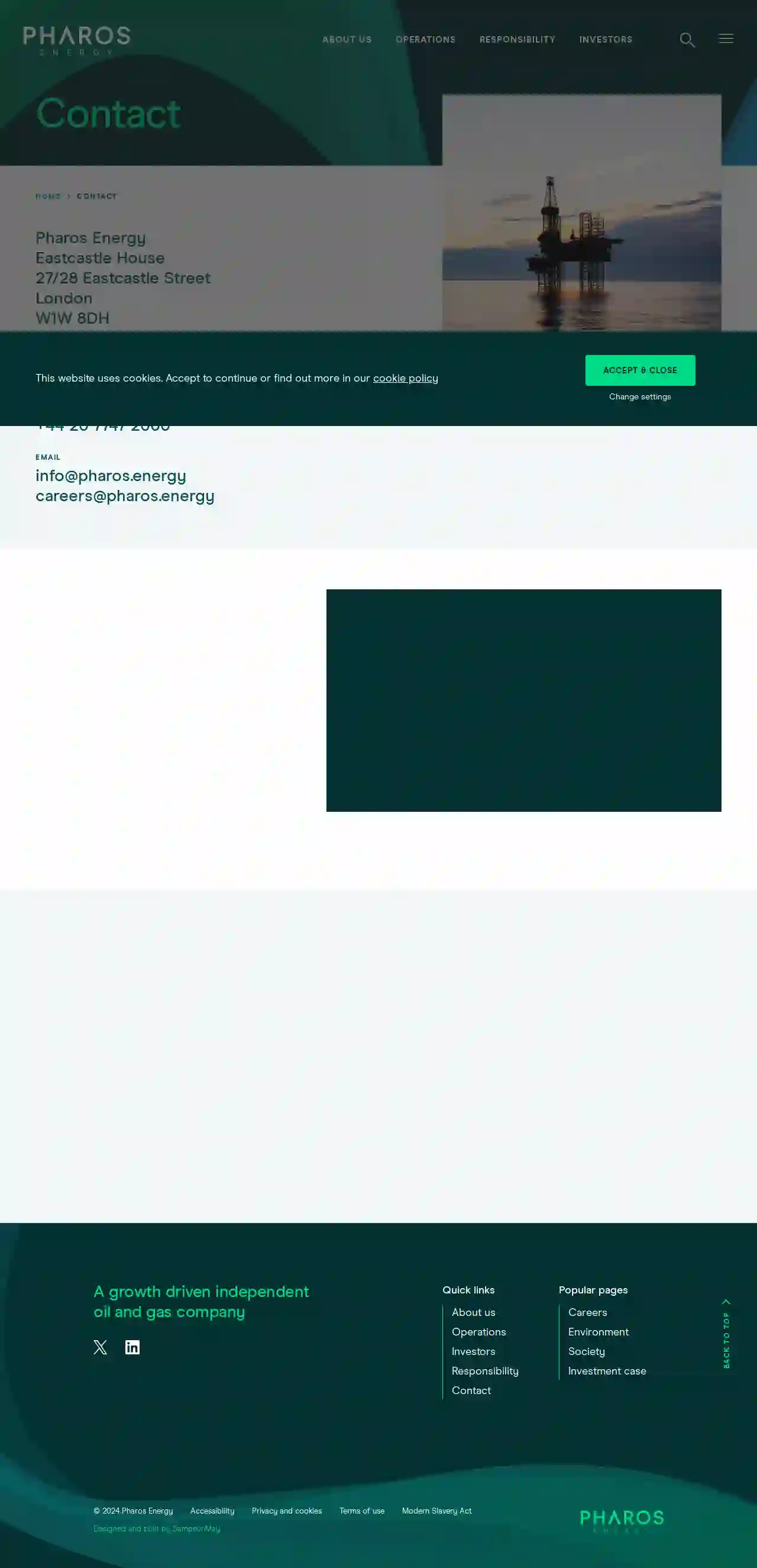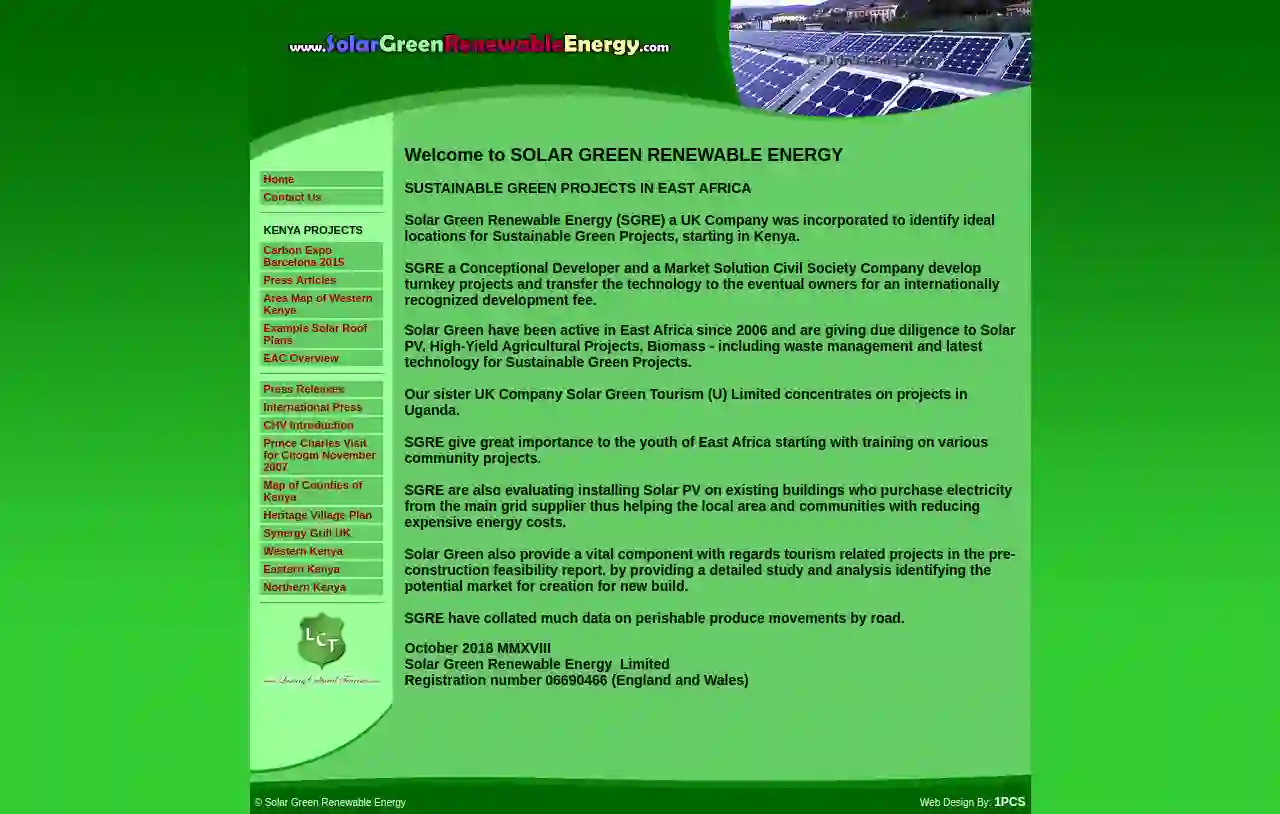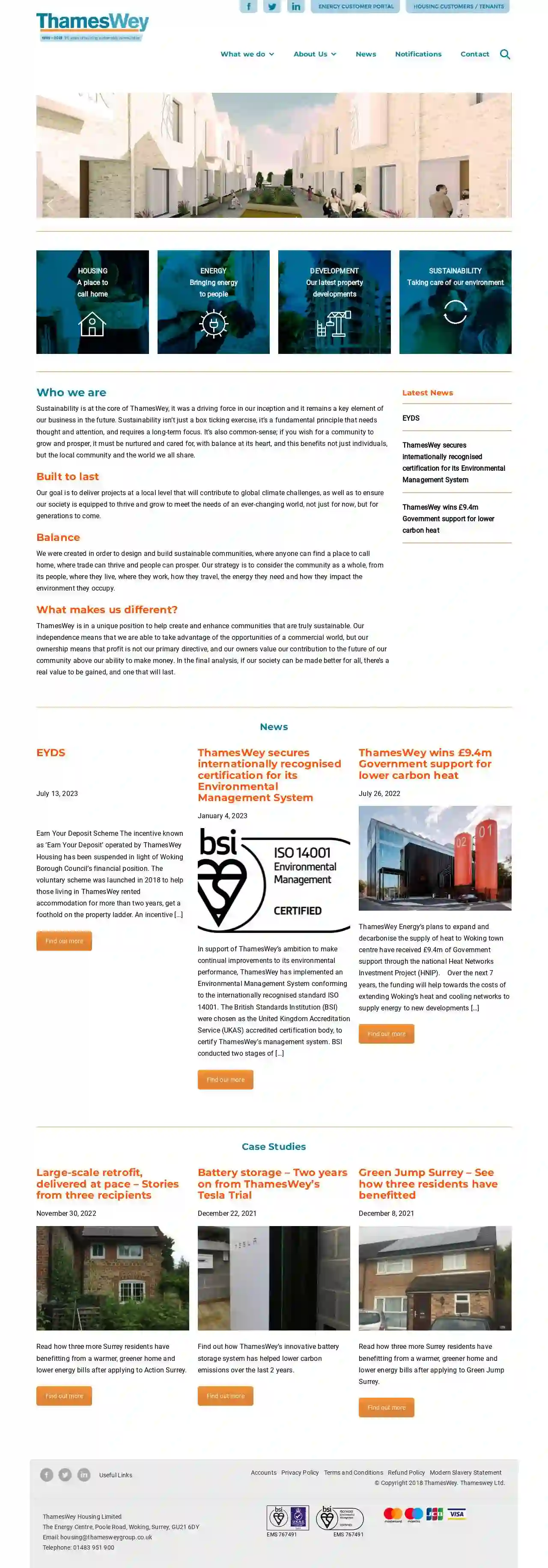Solar Installers Harefield
Top 10 Solar Installation Company in Harefield
Get 3 FREE Solar Installation Companies quotes for your project today! Compare profiles, reviews, accreditations, portfolio, etc... and choose the best service.

Solarbean Coffee
57 reviews28, School Road, Penn, HP10 8EF, GBSolarbean Coffee is a small-batch roastery based in Penn, Buckinghamshire. We are passionate about sourcing the finest, fairest coffee beans in the world and roasting them to perfection using solar power. Our commitment to sustainability extends to our fully home-compostable packaging and local bicycle delivery. We believe in simple, sustainable, and sensational coffee, and we invite you to come and say hello at our roastery in Penn. Our Story At Solarbean Coffee, we believe in making a positive impact on the world through our coffee. We source our beans directly from farmers who are committed to sustainable practices, and we roast them using solar power to minimize our environmental footprint. Our goal is to provide our customers with the highest quality coffee while also supporting ethical and sustainable sourcing. Our Process Our coffee journey begins with carefully selecting the finest coffee beans from around the world. We work directly with farmers who share our commitment to quality and sustainability. Once the beans arrive at our roastery, we roast them in small batches using our solar-powered roaster. This allows us to carefully control the roasting process and bring out the unique flavors of each bean. Our Packaging We are committed to minimizing our environmental impact, and our packaging reflects this commitment. Our coffee is packaged in fully home-compostable bags, so you can enjoy your coffee guilt-free. Our Delivery We deliver our coffee locally by bicycle, reducing our carbon footprint and supporting sustainable transportation. Come and Visit Us! We invite you to come and visit our roastery in Penn, Buckinghamshire. You can meet our team, learn more about our coffee, and enjoy a cup of freshly brewed Solarbean Coffee.
- Services
- Why Us?
- Testimonials
- Gallery
Get Quote
ACDC Ener-G Ltd
51 reviews10 Hampton Street, Northampton, NN1 2PH, GBACDC Ener-G Ltd is a fully qualified Northampton based solar and renewable services company providing quality home improvements for proud homeowners across Northamptonshire. We offer a range of services, including solar panel installation, EV charger installation, and battery storage systems. We also offer a free consultation to all potential customers. During the consultation, one of our engineers will assess your needs and recommend the best renewable energy solution for your home or business. We will also provide you with a detailed quote. At ACDC Ener-G Ltd, we’ve built our livelihoods on building peoples’ dreams across Northamptonshire. From the small to the extensive, we’ve experienced it all and we can help you every step of the way. No job is too small or too big!
- Services
- Why Us?
- Gallery
Get Quote
Kynergy LTD
512 reviews56 Dunster Street, Northampton, NN13JY, GBKynergy LTD is a leading provider of solar energy solutions, dedicated to helping homeowners and businesses reduce their energy bills and carbon footprint. With over a decade of experience in electrical and construction, our team of experts is committed to delivering top-quality installations and exceptional customer service. Our mission is to empower individuals and communities to take control of their energy needs, while promoting sustainability and reducing our reliance on fossil fuels. We believe that solar energy is a free raw material, and our goal is to make it accessible to everyone. With our comprehensive range of services, including solar panel maintenance, residential solar power installations, bird protection installations, EV charger installations, and solar battery installations, we are dedicated to helping our customers unlock their energy potential and join the renewable energy revolution.
- Services
- Why Us?
- Accreditations
- Gallery
Get Quote
Alternergy
4.19 reviews9 Fishers Lane, The Garment Building, Chiswick, W4 1RX, GBSince 2006, Alternergy has grown to become one of the leading B2B distributors of Solar PV, Battery Storage and Mounting solutions for the UK, Ireland and beyond. Named a "Company to inspire Britain" by the London Stock Exchange in 2014, we have come a long way. A personalised approach, strong relationships with Tier 1 manufacturers, a specialised solar PV design tool, and a bespoke B2B e-commerce platform lie at the core of our success, making us the ultimate destination for all things solar - from the smallest bolt to the largest Utility Scale systems.
- Services
- Why Us?
- Gallery
Get Quote
Jak Solar & Renewable Energy
51 reviewsEaling, GBAre you looking for a clean and renewable energy source that can help you reduce your energy bills and carbon footprint? By harnessing the power of the sun, you can reduce your reliance on fossil fuels and lower your energy bills. Jak Solar & Renewable Energy are solar panel installation specialists, we design a custom solar solution that fits your needs and budget. Offering a friendly, professional, and reliable service we hold ourselves to high standards and provide a range of services, including site assessment, design, installation, and maintenance.Covering the whole of Devon and Cornwall we offer a free no obligation survey and quotation. For your reassurance and Smart Export Guarantee Scheme eligibility we are NICEIC approved and MCS accredited.Our team is available to answer any questions you may have and provide ongoing support after the installation is complete.Thank you for considering Jak Solar Renewable Energy, we look forward to working with you to create a brighter, more sustainable future.
- Services
- Why Us?
- Accreditations
- Gallery
Get Quote
Glo Renewables
529 reviewsTotnes, Devon, Unit 1, The Old Bakery, TQ9 5LW, GBGlo Renewables is a solar panel and renewable energy solutions provider based in Devon, UK. They offer a range of services including domestic and commercial solar panels, car and EV charging, solar hot water, batteries, and electrical services. The company is committed to helping customers reduce their carbon footprint and save money on energy bills. With a team of experienced professionals, Glo Renewables provides expert advice and installation services to ensure a smooth and stress-free experience for their clients.
- Services
- Why Us?
- Accreditations
- Our Team
- Testimonials
- Gallery
Get Quote
Pharos Energy
27/28 Eastcastle Street, Eastcastle House, London, W1W 8DH, GBPharos Energy is an independent energy company with a focus on delivering long-term sustainable value for all stakeholders through regular cash returns and organic growth, underpinned by a robust cash flow and resilient balance sheet. We operate with a lean, efficient structure, designed to identify and realise value for all our stakeholders. Our distinctive portfolio in the energy regions of Asia and MENA supports our strategy of delivering long-term, sustainable growth and returns. We empower people to take the lead and have a positive impact on the communities, countries, and Governments where we work. We recognise our responsibilities and the importance of achieving high standards in our Environmental, Social, and Governance agenda. From climate change to governance, we will continue to address these imperatives systematically as we progress.
- Services
- Why Us?
- Gallery
Get Quote
SOLAR GREEN RENEWABLE ENERGY
London, GBSolar Green Renewable Energy (SGRE) a UK Company was incorporated to identify ideal locations for Sustainable Green Projects, starting in Kenya. SGRE a Conceptional Developer and a Market Solution Civil Society Company develop turnkey projects and transfer the technology to the eventual owners for an internationally recognized development fee. Solar Green have been active in East Africa since 2006 and are giving due diligence to Solar PV, High-Yield Agricultural Projects, Biomass - including waste management and latest technology for Sustainable Green Projects. Our sister UK Company Solar Green Tourism (U) Limited concentrates on projects in Uganda. SGRE give great importance to the youth of East Africa starting with training on various community projects. SGRE are also evaluating installing Solar PV on existing buildings who purchase electricity from the main grid supplier thus helping the local area and communities with reducing expensive energy costs. Solar Green also provide a vital component with regards tourism related projects in the pre-construction feasibility report, by providing a detailed study and analysis identifying the potential market for creation for new build. SGRE have collated much data on perishable produce movements by road. October 2018 MMXVIII Solar Green Renewable Energy Limited Registration number 06690466 (England and Wales) © Solar Green Renewable Energy Web Design By: 1PCS
- Services
- Why Us?
- Gallery
Get Quote
Surrey Solar ltd
58 reviews36 Macdonald Road, Lightwater, GU18 5TN, GBSurrey Solar is a family business based in Lightwater, Surrey, with over 28 years of experience in the electrical industry. We pride ourselves in carrying out Solar PV installations to the highest standard, supplying and fitting the best quality components available on the market. Our team of fully-qualified electricians are BPEC qualified and accredited in Photovoltaic design, installation and commissioning, battery storage, and systems design. We are accredited, certified, and insured for your protection and peace of mind. Our mission is to provide every customer with first-class customer service and the highest level of workmanship, while promoting and facilitating the adoption of renewable energy within homes and businesses.
- Services
- Why Us?
- Accreditations
- Our Team
- Gallery
Get Quote
ThamesWey Energy
The Energy Centre, Poole Road, Woking, GU21 6DY, GBSustainability is at the core of ThamesWey, it was a driving force in our inception and it remains a key element of our business in the future. Sustainability isn’t just a box ticking exercise, it’s a fundamental principle that needs thought and attention, and requires a long-term focus. It’s also common-sense; if you wish for a community to grow and prosper, it must be nurtured and cared for, with balance at its heart, and this benefits not just individuals, but the local community and the world we all share. Our goal is to deliver projects at a local level that will contribute to global climate challenges, as well as to ensure our society is equipped to thrive and grow to meet the needs of an ever-changing world, not just for now, but for generations to come. We were created in order to design and build sustainable communities, where anyone can find a place to call home, where trade can thrive and people can prosper. Our strategy is to consider the community as a whole, from its people, where they live, where they work, how they travel, the energy they need and how they impact the environment they occupy. ThamesWey is in a unique position to help create and enhance communities that are truly sustainable. Our independence means that we are able to take advantage of the opportunities of a commercial world, but our ownership means that profit is not our primary directive, and our owners value our contribution to the future of our community above our ability to make money. In the final analysis, if our society can be made better for all, there’s a real value to be gained, and one that will last.
- Services
- Why Us?
- Accreditations
- Gallery
Get Quote
Over 3,485+ Solar Businesses on our directory
Our solar providers operate in Harefield and surroundings!
SolarCompaniesHub has curated and vetted the Best Solar Businesses arround Harefield. Find a trustworthy pro today.
Frequently Asked Questions About Solar Installers
- Contact SolarCompaniesHub: We make it simple to connect with reputable Solar Installers in your area.
- Get Free Quotes: Request free quotes from multiple installers to compare prices, systems, and warranties.
- Schedule a Site Assessment: A qualified installer will visit your property to assess your roof, energy needs, and discuss your goals.
- Review Your Proposal and Contract: Carefully review the proposed system, financing options, and warranties before signing a contract.
- Installation and Activation: Once the contract is signed, the installer will obtain necessary permits, schedule the installation, and activate your solar system.
- String Inverters: Connect multiple panels in a series (a 'string'). A cost-effective option for simple systems, but a single panel issue can affect the entire string.
- Microinverters: Attach to each individual solar panel, maximizing energy production even if some panels are shaded. They are more expensive but offer greater efficiency and monitoring capabilities.
- Power Optimizers: Similar to microinverters, but less expensive. They optimize the output of each panel and provide individual panel monitoring, but a central inverter is still required.
- Hybrid Inverters: Combine a solar inverter with a battery charge controller, allowing for seamless integration of battery storage.
How do I get started with solar panel installation?
What are the different types of solar inverters?
Do solar panels increase my home value?
Will solar panels work during cloudy days or at night?
How do I get started with solar panel installation?
- Contact SolarCompaniesHub: We make it simple to connect with reputable Solar Installers in your area.
- Get Free Quotes: Request free quotes from multiple installers to compare prices, systems, and warranties.
- Schedule a Site Assessment: A qualified installer will visit your property to assess your roof, energy needs, and discuss your goals.
- Review Your Proposal and Contract: Carefully review the proposed system, financing options, and warranties before signing a contract.
- Installation and Activation: Once the contract is signed, the installer will obtain necessary permits, schedule the installation, and activate your solar system.
What are the different types of solar inverters?
- String Inverters: Connect multiple panels in a series (a 'string'). A cost-effective option for simple systems, but a single panel issue can affect the entire string.
- Microinverters: Attach to each individual solar panel, maximizing energy production even if some panels are shaded. They are more expensive but offer greater efficiency and monitoring capabilities.
- Power Optimizers: Similar to microinverters, but less expensive. They optimize the output of each panel and provide individual panel monitoring, but a central inverter is still required.
- Hybrid Inverters: Combine a solar inverter with a battery charge controller, allowing for seamless integration of battery storage.